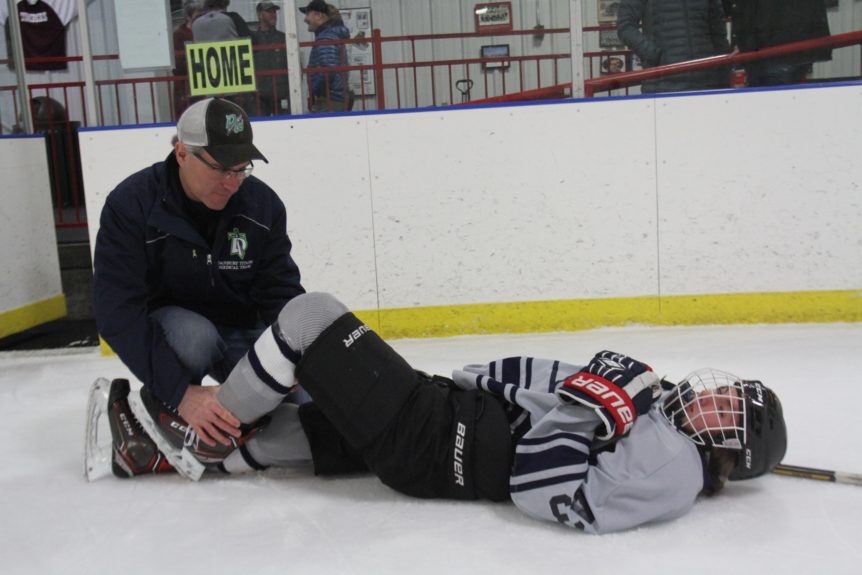As the hockey season nears, we should be thinking about how to prevent injuries so we can continue to skate, pass, save, shoot, and score for the entire season. Whether you are a former collegiate or professional player, just starting out, or playing varsity for the first time, an ounce of prevention is worth a pound of cure. Nothing you can do will guarantee an injury free season but there are some simple steps you can take that will minimize your chances of injury.
Start by dusting off your equipment and check your skates – do they still fit as well as last season? Are they wearing out in the boot? Is there a crack in the tuck? Do the blades need sharpening (the answer is almost always yes)? Is your helmet in good condition? Your shoulder, elbow, or shin pads? Are your pants worn through? If the answer is yes to any or all of these questions, invest the money to repair or replace your equipment early so that by the time the season starts, you are comfortable with your new stuff (especially skates – they need to be used progressively and for a few weeks before wearing for hours on end or you are sure to suffer from blisters or skate bite).
Next, assess your fitness level. Have you been exercising all summer or have you been taking it easy? Hockey requires a high level of aerobic fitness to play it properly and avoid injuries. When you are exhausted, you are more likely to suffer an injury. Interval training (short bursts of high intensity exercises alternating with short periods of low intensity exercise or rest) at least 3 days per week with an endurance day (low intensity long distance training), a flexibility day (stretching, yoga, pilates), and 1 or 2 strength training days would be ideal. Of course, this can be tailored to an individual’s interests so that a long, mellow mountain bike or trail run can be your endurance day, an intense game of basketball can be an interval day, and push-ups and pull-ups can meet your strength training requirement. Most importantly, find things you enjoy and do them in such a way that you meet your body’s needs in preparing for the hockey season.
Core strength is key to excelling at hockey and avoiding injury. The core is not just abdominal muscles – rather it is the abdominal muscles, the lower back muscles, the quadriceps, the gluteus muscles, and the pectoral muscles. These muscles together help transfer power from the legs to the upper body so that you can shoot and pass better, take a hit and bounce back, and stick-handle to the best of your ability. Yoga and pilates are excellent ways to improve core strength. Planks, side-planks, mountain climbers, and leg raises are also great core exercises to incorporate into your routine. If you are unsure how to do any of these exercises properly, please check online or with your coach, trainer, or physician so that you are exercising efficiently and don’t hurt yourself.
In summary, hockey is an exhilarating sport that demands a high level of fitness, strength, flexibility, and core strength to enjoy it to its fullest and minimize the risk of injury. Be good to yourself and to your team by putting in the time pre-season and it will surely pay dividends during the season. Of course, injuries do happen and be sure to call me, David Elfenbein from Pinnacle Orthopedics and Sports Medicine at 970-672-1980, if you are injured or need some advice.
By: David H. Elfenbein, M.D. Pinnacle Orthopedics and Sports Medicine

